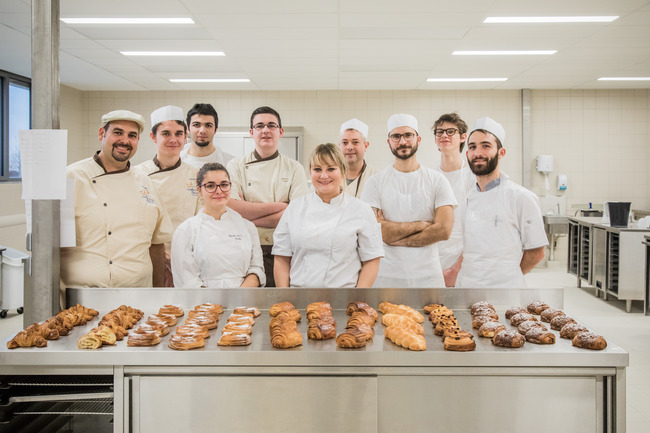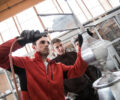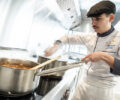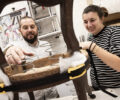Meet the Compagnons du Devoir, the Ancient Guild of Master Craftsmen
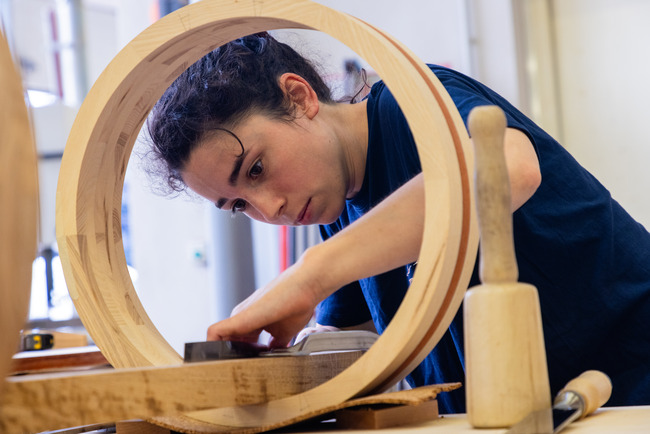

Living and upholding a 900-year-old craftsmen’s tradition in the 21st century
The Compagnons du Devoir (Companions of Duty) is an ancient guild of master craftsmen with roots dating back to the 12th century. Many considered themselves symbolic heirs to the builders of Solomon’s Temple. Over the centuries they flourished, split into factions, and were outlawed at the time of the French Revolution and again during the Second World War. Nevertheless, they have prevailed to the present day, earlier rivalries set aside, united under the name Compagnons du Devoir et du Tour de France.
In 2010, the association was inscribed on UNESCO’s list of the Intangible Cultural Heritage of Humanity. In keeping with the times, they have adopted a contemporary logo of a flight of swallows, although the traditional emblem with craftsmen’s measuring tools is still used formally within the organization.
The Paris seat of the Compagnons is in the historic Marais district, adjacent to the Eglise Saint-Gervais and almost directly across the Seine from Notre Dame. In the aftermath of the fire, stone masons, carpenters, roofers, painters, marquetry, and stained-glass artisans — from apprentices to veteran Compagnons — made significant contributions to the restoration of the cathedral.

Les Compagnons du devoir, mason. Photo: ©Thierry Caron /Divergence
The definition of Duty in 2021
In the words of Christian Pons, current president of the association, “The Compagnons du Devoir offer a comprehensive and unique training model. Far from being an end in itself, learning a métier is a means of fulfilling and surpassing oneself to become ‘capable, worthy, free, and generous,’ in accordance with the ‘Compagnon spirit.’”
There are four pillars along the route to becoming a Compagnon:
- The Métier: where one progresses from basic to skilled proficiencies through hands-on practice in the chosen trade.
- The Journey: the Tour de France provides the opportunity to experience new environments and people through traveling.
- The Community: the formation of contacts with elders and young contemporaries within a Maison de Compagnons while on the Tour de France.
- Initiation, which unfolds in two stages:
- Adoption: welcoming ceremony at the start of the Tour de France, when an Apprentice becomes an Aspirant.
- Reception: when the Aspirant has produced a professional work of art while remaining faithful to the tenets of his or her chosen path, he or she will be formally received as a Compagnon du Devoir.
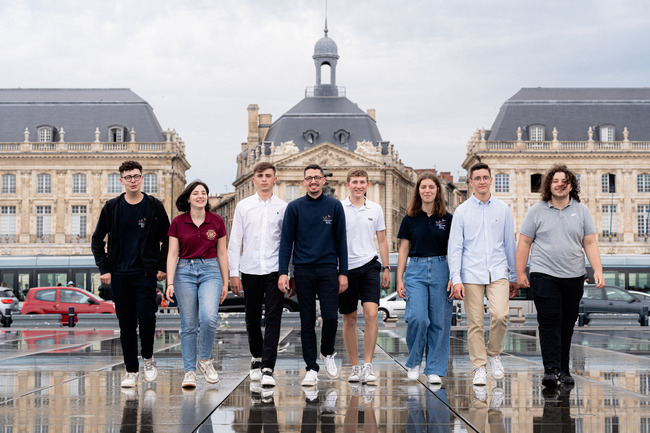
les Compagnons du Devoir, itinerant group in Bordeaux 25. © Jules Despretz
The training program, or formation, is intended for young people between the ages of 15 and 25. For those above 25 there are various continuing-education courses.
As just noted, central to the training of a Compagnon is participation in the Tour de France. In French, the word compagnon not only means companion, as in comrade, but also journeyman. Over a period of approximately five years Aspirants travel once or twice a year to a new region where they reside with their fellows, along with older Compagnons, at the local Maison de Compagnons. After four years, some will be able to pursue their training internationally, mostly but not exclusively in Europe, e.g., Antarctica!
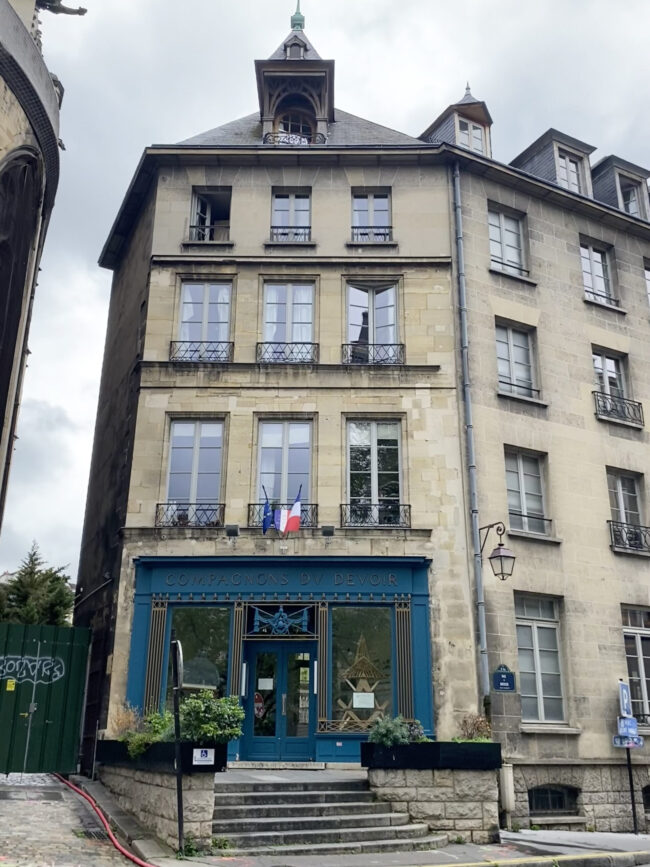
Façade of the Compagnons du devoir Paris headquarters in the Marais. Photo: Joy Anderson
Entrez, s’il vous plaît
There are 64 Maisons de Compagnons spread across France and twice a year the majority open their doors, primarily to potential candidates, but also to the public at large. The next Journée des Portes Ouvertes (open house) is coming up soon on March 22.
The Compagnons offer training in over 30 métiers and in Paris a large number of them are on show. Métiers are divided into five categories:
- Bâtiment & aménagement (Building & furnishing)
- Technologie de l’industrie (Industrial technologies)
- Métiers du goût (Culinary professions)
- Matériaux souples (Malleable materials)
- Et aussi . . . (And also—specifically, barrel-making and therapeutic blacksmithing)
This January I took advantage of the invitation and stopped by the Paris Maison in the rue Brosse to see for myself. (Be forewarned that the Ville de Paris has a major construction project underway right out front.) Inside the entrance a 9-ft-tall replica of the Eiffel Tower is on display. The official greeters, the student visitors, and most of the apprentices on duty at the various demo stations were all Gen Zers, which made for easy exchanges and an unintimidating atmosphere.
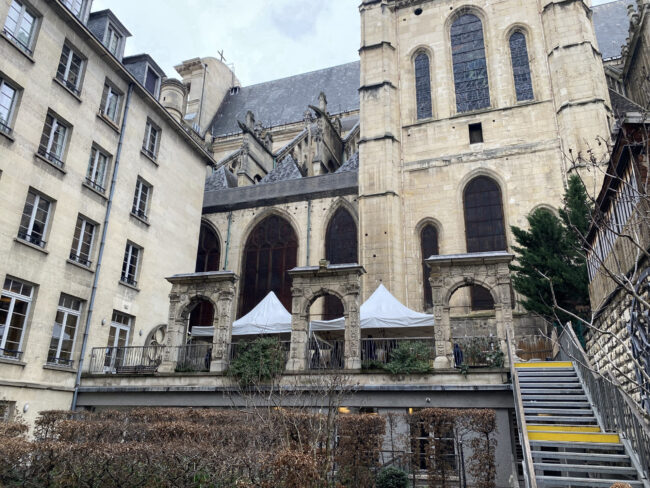
The open house at the Compagnons du devoir Paris headquarters. Photo: Joy Anderson
Tables were set out both in the main dining room and on the floor below. A propos of the dining room, the walls are covered in decorative bas reliefs in stone and plaster and the wooden doors are intricately carved. Outside on the terrace in the shadow of the gothic towers of Saint-Gervais, two large white tents had been erected to protect the carpentry and construction projects from the inclement weather. Peering over the side, you could see the carefully laid-out garden plots — not at their greenest in January.
Inside the dining room I started to head towards Pâtisserie and Boulangerie, but was immediately sidetracked by some leather and upholstery creations, including a tufted makeup station encased in a red leather cello case. Next to that was a table full of shoes where a young cobbler was demonstrating her craft. There were decorative breads at the baking station, and a number of children sat behind a table rolling colored modeling clay into croissants, braided loaves, and the like.
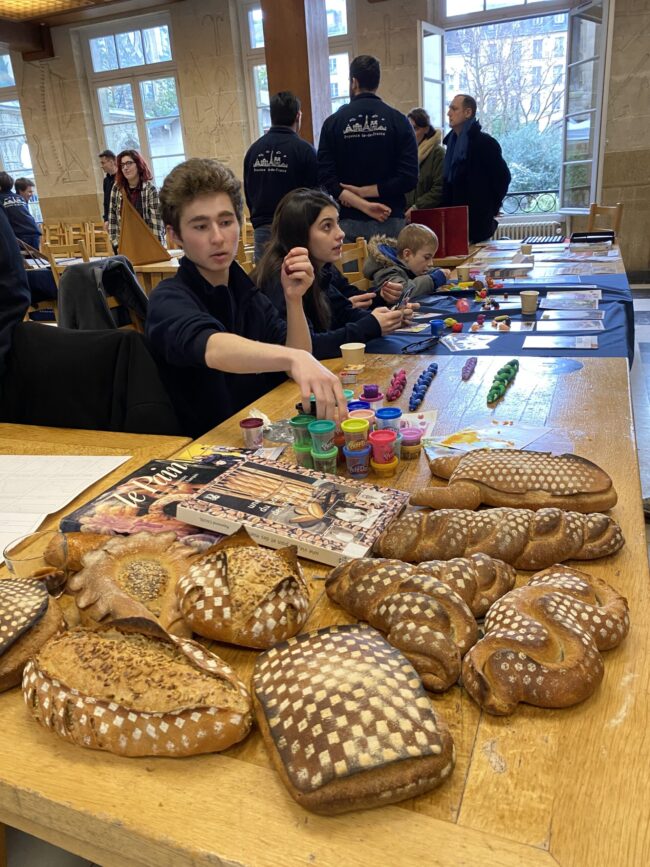
The pastry and bakery table at the Compagnons du devoir open house. Photo: Joy Anderson
One of my longer conversations was with a vigneron. While I didn’t get to taste any wine, I had fun sniffing from miniature glass bottles and guessing the fruity, floral, spiced and other aromatic notes commonly present in wines.
The only category of métiers to which I was not drawn was Industrial Technologies, which includes bodywork, mechanics, electrotechnology, boiler making and the like. Chaqu’un à son goût.
Bonus round
Now, if you can’t make it on March 22 this year and are still intrigued, all is not lost.
There is an unparalleled year-round resource just across the street on the corner of the rue Brosse and the quai de l’Hôtel de Ville along the Seine. La Librairie du Compagnonnage (1 place Saint-Gervais, 4th) is a really terrific bookstore founded in 1951 by a contemporary Compagnon and is jam packed with books and other material related to the history and métiers of the Compagnons du Devoir. The majority of books is in French, but the excellence of their illustrations and design mean that you almost don’t need words to appreciate them.
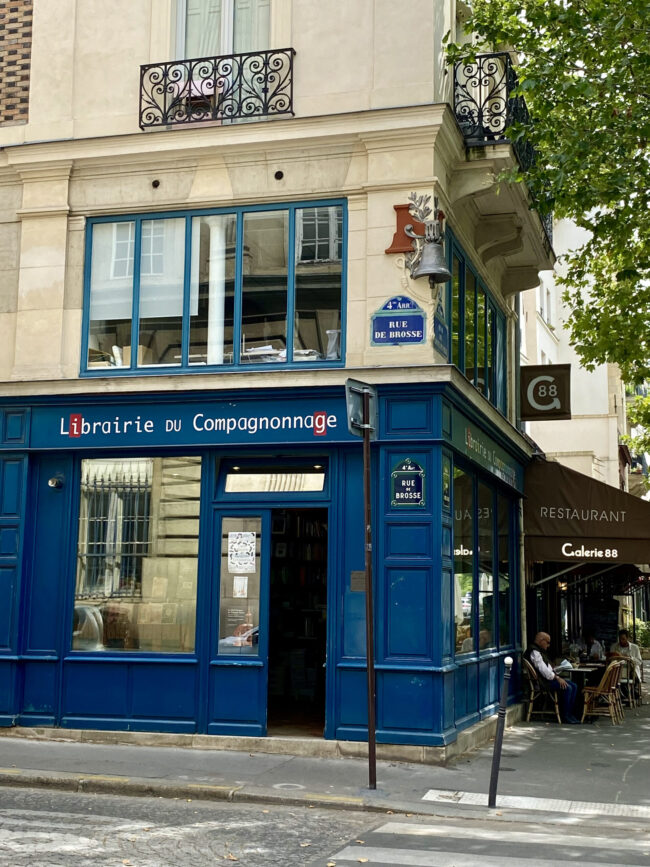
La Librairie du Compagnonnage. Photo: Joy Anderson
Lead photo credit : Les Compagnons du Devoir, Ebeniste. Photo: © AOCDTF/ Florent Pottier
More in Artisan, Compagnons du Devoir, guild
